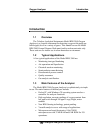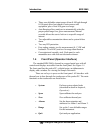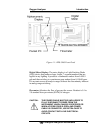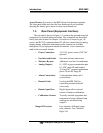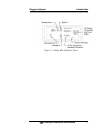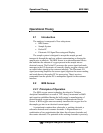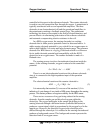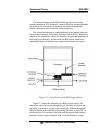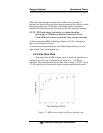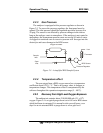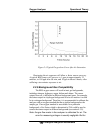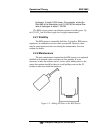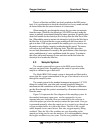
Operational Theory BDS 3960
Teledyne Analytical Instruments 18
Operational Theory
2.1 Introduction
The analyzer is composed of four subsystems:
• BDS Sensor
• Sample System
• Pocket PC
• Electronic I/O Signal Processing and Display
The sample system is designed to accept the sample gas and
transport it through the analyzer without contaminating or altering the
sample prior to analysis. The BDS Sensor is an electrochemical device
that translates the amount of oxygen present in the sample into an
electrical current. The Pocket PC processes the sensor signal and sends
messages to the I/O electronics to correctly display oxygen value as well
as control other signals to the customer interface. The Electronic I/O
signal processing amplifies the sensor signal, digitizes the sensor reading
and sends them to the pocket PC for processing. Then it receives
commands from the pocket PC to manipulate signals for the customer
interface.
2.2 BDS Sensor
2.2.1 Principles of Operation
The BDS oxygen sensor technology developed at Teledyne
Analytical Instruments is a result of TAI’s heavy investment on R&D
and expertise established during the half-century’s manufacturing of
electrochemical oxygen sensor. It stands for Bipotentiostat Driven
Sensor. A BDS oxygen sensor accurately translates the oxygen level in
the sample gas into to an electrical current signal.
A potentiostat contains three electrodes: a working electrode, a
reference electrode and a counter electrode. A Bipotentiostat is a
combination of two potentiostats that share the reference electrode and
the counter electrode. The potential at the working electrode is precisely






